Rodrigo Vergara
PUBLICACIONES
ABSTRACT
INTRODUCTION
Age-related hearing loss is an important risk factor for cognitive decline. However, audiogram thresholds are not good estimators of dementia risk in subjects with normal hearing or mild hearing loss. Here we propose to use distortion product otoacoustic emissions (DPOAEs) as an objective and sensitive tool to estimate the risk of cognitive decline in older adults with normal hearing or mild hearing loss.METHODS
We assessed neuropsychological, brain magnetic resonance imaging, and auditory analyses on 94 subjects > 64 years of age.RESULTS
We found that cochlear dysfunction, measured by DPOAEs—and not by conventional audiometry—was associated with Clinical Dementia Rating Sum of Boxes (CDR-SoB) classification and brain atrophy in the group with mild hearing loss (25 to 40 dB) and normal hearing (<25 dB).DISCUSSION
Our findings suggest that DPOAEs may be a non-invasive tool for detecting neurodegeneration and cognitive decline in the older adults, potentially allowing for early intervention.ABSTRACT
ABSTRACT
It is widely accepted that the brain, like any other physical system, is subjected to physical constraints that restrict its operation. The brain's metabolic demands are particularly critical for proper neuronal function, but the impact of these constraints continues to remain poorly understood. Detailed single-neuron models are recently integrating metabolic constraints, but these models’ computational resources make it challenging to explore the dynamics of extended neural networks, which are governed by such constraints. Thus, there is a need for a simplified neuron model that incorporates metabolic activity and allows us to explore the dynamics of neural networks. This work introduces an energy-dependent leaky integrate-and-fire (EDLIF) neuronal model extension to account for the effects of metabolic constraints on the single-neuron behavior. This simple, energy-dependent model could describe the relationship between the average firing rate and the Adenosine triphosphate (ATP) cost as well as replicate a neuron's behavior under a clinical setting such as amyotrophic lateral sclerosis (ALS). Additionally, EDLIF model showed better performance in predicting real spike trains – in the sense of spike coincidence measure – than the classical leaky integrate-and-fire (LIF) model. The simplicity of the energy-dependent model presented here makes it computationally efficient and, thus, suitable for studying the dynamics of large neural networks.
[:]ABSTRACT
It is still elusive to explain the emergence of behavior and understanding based on its neural mechanisms. One renowned proposal is the Free Energy Principle (FEP), which uses an information-theoretic framework derived from thermodynamic considerations to describe how behavior and understanding emerge. FEP starts from a whole-organism approach, based on mental states and phenomena, mapping them into the neuronal substrate. An alternative approach, the Energy Homeostasis Principle (EHP), initiates a similar explanatory effort but starts from single-neuron phenomena and builds up to whole-organism behavior and understanding. In this work, we further develop the EHP as a distinct but complementary vision to FEP and try to explain how behavior and understanding would emerge from the local requirements of the neurons. Based on EHP and a strict naturalist approach that sees living beings as physical and deterministic systems, we explain scenarios where learning would emerge without the need for volition or goals. Given these starting points, we state several considerations of how we see the nervous system, particularly the role of the function, purpose, and conception of goal-oriented behavior. We problematize these conceptions, giving an alternative teleology-free framework in which behavior and, ultimately, understanding would still emerge. We reinterpret neural processing by explaining basic learning scenarios up to simple anticipatory behavior. Finally, we end the article with an evolutionary perspective of how this non-goal-oriented behavior appeared. We acknowledge that our proposal, in its current form, is still far from explaining the emergence of understanding. Nonetheless, we set the ground for an alternative neuron-based framework to ultimately explain understanding.
[:]ABSTRACT
The ability of an organism to voluntarily control the stimuli onset modulates perceptual and attentional functions. Since stimulus encoding is an essential component of working memory (WM), we conjectured that controlling the initiation of the perceptual process would positively modulate WM. To corroborate this proposition, we tested twenty-five healthy subjects in a modified-Sternberg WM task under three stimuli presentation conditions: an automatic presentation of the stimuli, a self-initiated presentation of the stimuli (through a button press), and a self-initiated presentation with random-delay stimuli onset. Concurrently, we recorded the subjects' electroencephalographic signals during WM encoding. We found that the self-initiated condition was associated with better WM accuracy, and earlier latencies of N1, P2 and P3 evoked potential components representing visual, attentional and mental review of the stimuli processes, respectively. Our work demonstrates that self-initiated stimuli enhance WM performance and accelerate early visual and attentional processes deployed during WM encoding. We also found that self-initiated stimuli correlate with an increased attentional state compared to the other two conditions, suggesting a role for temporal stimuli predictability. Our study remarks on the relevance of self-control of the stimuli onset in sensory, attentional and memory updating processing for WM.

Vicuña Mackenna 4860
Macul, Chile



